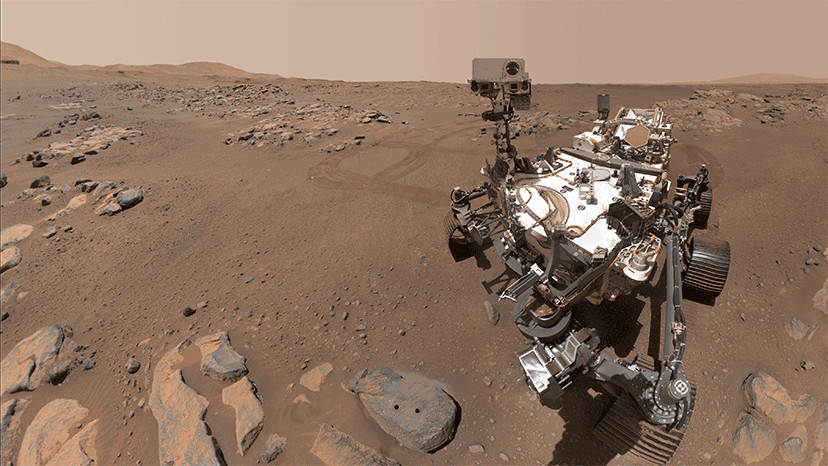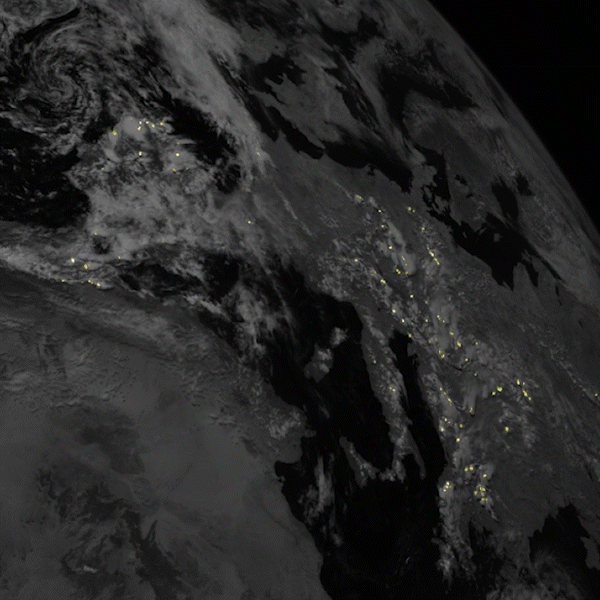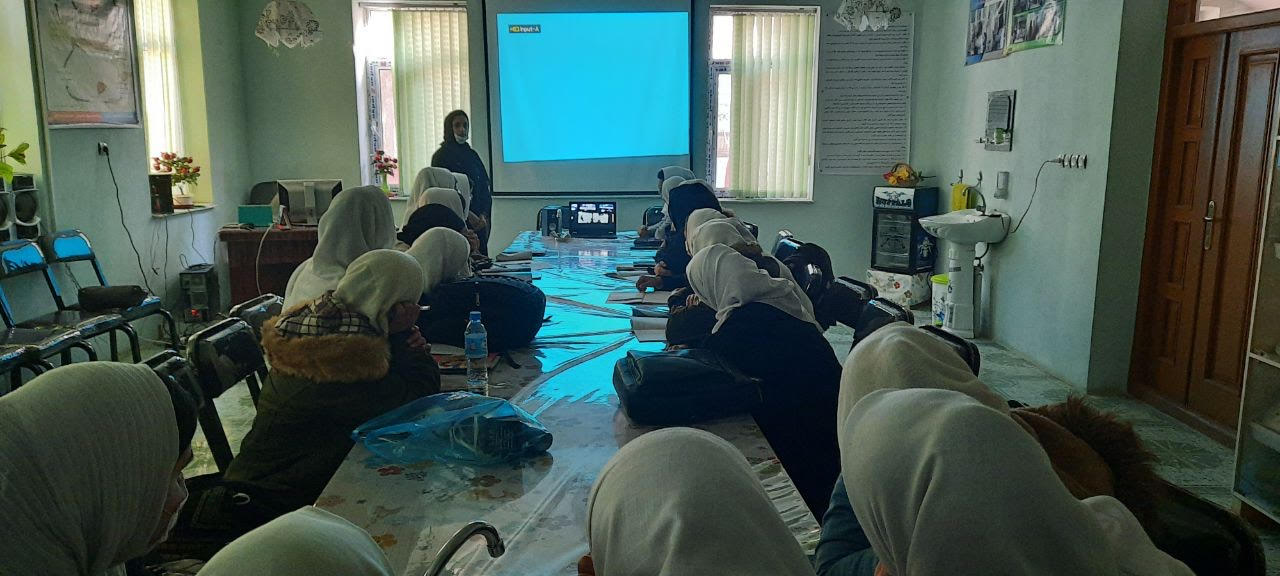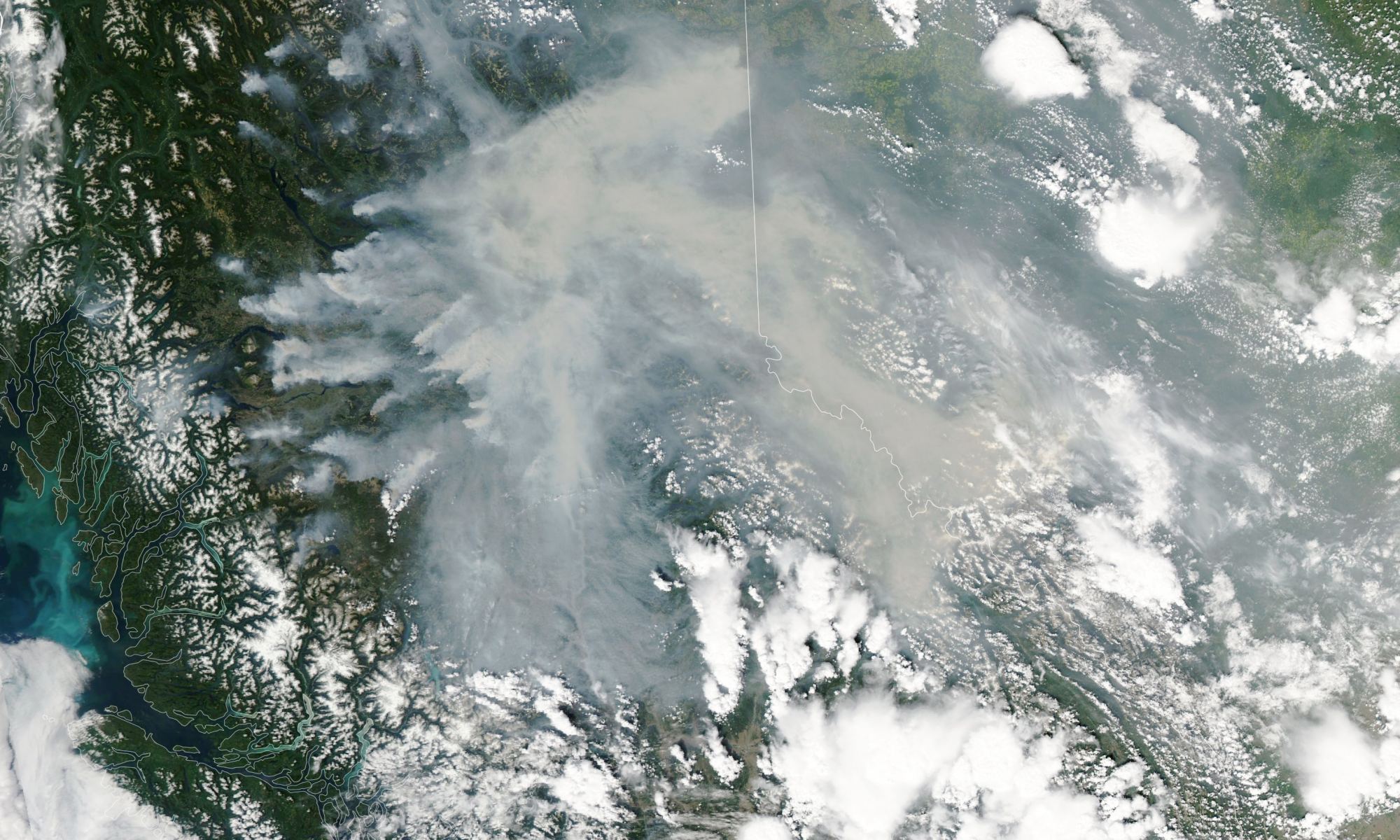The search for life on Mars has been a long a confusing one. Inconclusive experiments abound, but one thing is certain – there is definitely organic material on the Red Planet. Now, a new study in Nature has confirmed that finding and showed just how complex that organic material actually is.
Continue reading “Perseverance Finds a Wealth of Organic Materials on Mars”A Satellite is Now Continuously Watching Lightning Strikes in Europe
Satellites often offer new perspectives when they launch. Sometimes because of the location they are placed in – sometimes because of their instrumentation. A new satellite by a consortium of European companies and agencies now provides a new perspective on one of the most powerful and fleeting natural phenomena – lightning.
Continue reading “A Satellite is Now Continuously Watching Lightning Strikes in Europe”India Launches Chandrayaan-3 to the Moon, Hoping for a Successful Landing
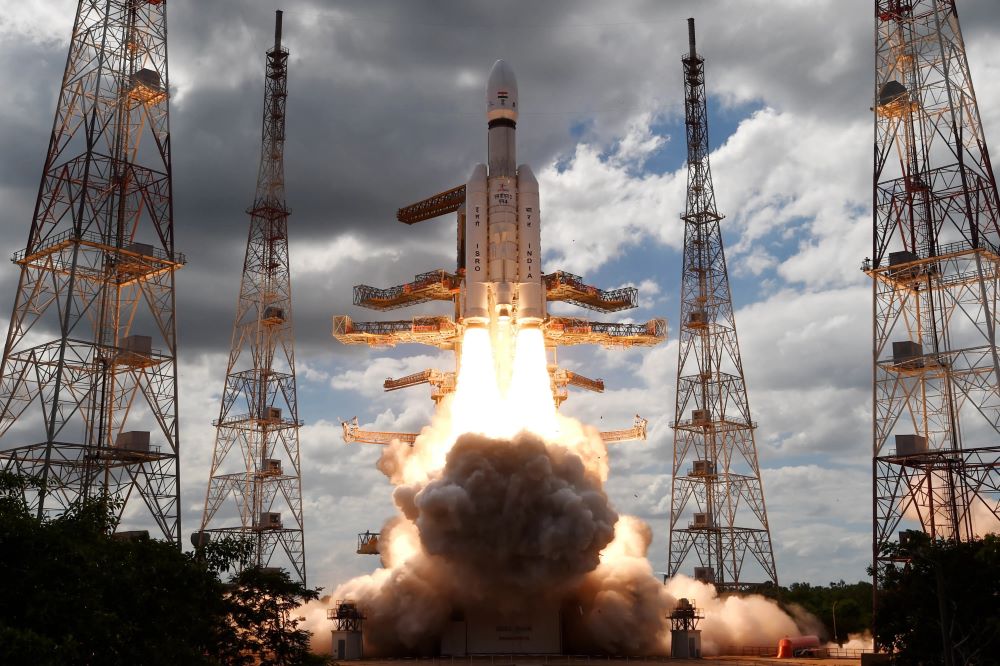
On July 14, 2023, at 2:35 pm Indian Standard Time (5:05 am EST), the Indian Space Resource Organisation (ISRO) successfully launched their Chandrayaan-3 spacecraft from the Satish Dhawan Space Center, which is the primary spaceport of the ISRO. The goal of the mission is to put India’s first lander (Vikram) and rover (Pragyan) on the lunar surface and is scheduled to touch down on the Moon on August 23, 2023. This mission comes after the ISRO’s Chandrayaan-2 Vikram lander crashed on the Moon on September 6, 2019, due to a last-minute guidance software glitch. While the ISRO indicated everything was going according to plan, they unexpectedly lost contact with the Vikram lander approximately 2.1 kilometers (1.3 miles) above the lunar surface.
Continue reading “India Launches Chandrayaan-3 to the Moon, Hoping for a Successful Landing”Liquid Water on Rocky Planets Could be 100 Times More Likely
It’s easy to think of Earth as a water world, with its vast oceans and beautiful lakes, but compared to many worlds, Earth is particularly wet. Even the icy moons of Jupiter and Saturn have far more liquid water than Earth. Earth is unusual not because it has liquid water, but because it has liquid water in the warm habitable zone of the Sun. And as a new study in Nature Communications shows, Earth could be even more unusual than we thought.
Continue reading “Liquid Water on Rocky Planets Could be 100 Times More Likely”Some Star Systems Create a Planet Sandwich

A recent study presented at the National Astronomy Meeting 2023 (NAM2023) examines a newly discovered planetary formation theory that challenges previous notions on how planets are formed in the disks of gas and dust surrounding young stars, also known as protoplanetary disks. Along with being presented at NAM2023, the study has also been submitted for peer-review to the journal Monthly Notices of the Royal Astronomical Society and holds the potential to help scientists better understand not only how planets form, but how life could form on them, as well.
Continue reading “Some Star Systems Create a Planet Sandwich”The Universe Could Be Twice As Old if Light is Tired and Physical Constants Change

When the James Webb Space Telescope started collecting data, it gave us an unprecedented view of the distant cosmos. Faint, redshifted galaxies seen by Hubble as mere smudges of light were revealed as objects of structure and form. And astronomers were faced with a bit of a problem. Those earliest galaxies seemed too developed and too large to have formed within the accepted timeline of the universe. This triggered a flurry of articles claiming boldly that JWST had disproven the big bang. Now a new article in the Monthly Notices of the Royal Astronomical Society argues that the problem isn’t that galaxies are too developed, but rather that the universe is twice as old as we’ve thought. A whopping 26.7 billion years old to be exact. It’s a bold claim, but does the data really support it?
Continue reading “The Universe Could Be Twice As Old if Light is Tired and Physical Constants Change”Afghanistan Students for the International Olympiad in Astronomy & Astrophysics Need Your Help
The 16th International Olympiad on Astronomy and Astrophysics (IOAA) will be held this year in Silesia, Poland on August 10-20, 2023. 265 students from 53 countries will take part in this annual competition that challenges select high school students from around the world in astronomical science.
One group of student in particular stands out in overcoming incredible odds to qualify for participation in this event, and they need financial help to be able to attend. Student from Afghanistan have been restricted from publicly participating in science activities like astronomy due to the presence of the Taliban. Additionally, a majority of the students from Afghanistan who qualified to attend the IOAA are girls, and since the Taliban returned to power nearly two years ago, they have resumed pushing women and girls out of public life and out of schools.
Continue reading “Afghanistan Students for the International Olympiad in Astronomy & Astrophysics Need Your Help”China Has Begun Launching its Own Satellite Internet Network
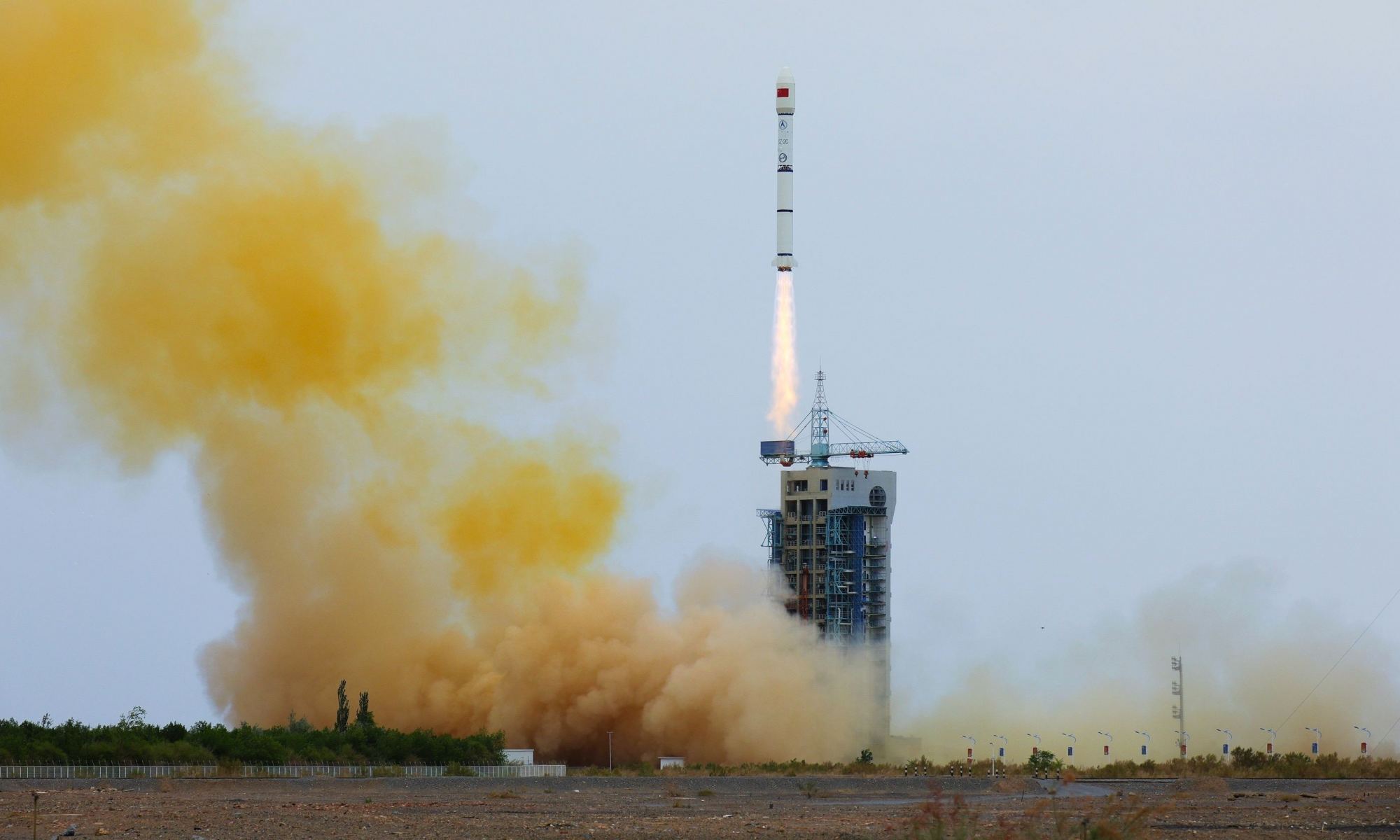
Since 2019, Elon Musk and SpaceX have led the charge to create high broadband satellite internet services. As of May 2023, the Starlink constellation consisted of over 4,000 satellites operating in Low Earth Orbit (LEO) and roughly 1.5 million subscribers worldwide. Several competitors began launching constellations years before Starlink began, and several companies have emerged since. This includes HughesNet, OneWeb, and Amazon’s Kuiper Systems. But Starlink’s latest challenger could be its most fearsome yet: a company in China backed by the Beijing government!
On Sunday, July 9th, a prototype internet satellite was launched aboard a Long March 2C carrier rocket from China’s Jiuquan Satellite Launch Center in Inner Mongolia. The satellite has since entered a predetermined orbit, where it will conduct several tests to validate the broadband satellite technology. The long-term aim of the project is to create a constellation of 13,000 satellites code-named “Guo Wang,” – which loosely translates to “state network” in Mandarin – reflecting Beijing’s vision for a state-run share of the satellite internet market.
Continue reading “China Has Begun Launching its Own Satellite Internet Network”Forest Fires in British Columbia are Bad This Year. THIRTY Times Worse Than Average
This summer has seen a violent outbreak of forest fires across Canada and North America. According to the Canadian Interagency Forest Fire Center (CIFFC), there were 911 active fires across the country on July 13th, nearly 600 of which were characterized as “out-of-control.” More than half of these active fires are taking place in the provinces of British Columbia, driven by a combination of unusual heat, dry lightning, and drought. The situation is becoming increasingly common thanks to rising global temperatures, diminished rainfall, changing weather patterns, and other related effects of Climate Change.
Monitoring forest fires and other meteorological phenomena is an important task for which Earth Observation missions like NASA’s Aqua satellite were created. On July 12th, with six weeks left in the Canadian fire season, Aqua captured images of some of the largest fires over British Columbia using its Moderate Resolution Imaging Spectroradiometer (MODIS) instrument. The image above shows some of the biggest “hot spots” in the province, which produced dense plumes of smoke blowing eastward through the Rocky Mountains and into Alberta and the Northwest Territories.
Continue reading “Forest Fires in British Columbia are Bad This Year. THIRTY Times Worse Than Average”We've Got to Go Back to Enceladus. Here's a Mission That Could Get the Science
In our search for life on other worlds, the one we’ve most explored is Mars. But while Mars has the makings for possible life, it isn’t the best candidate in our solar system. Much better are the icy moons of Jupiter and Saturn, which we know have liquid water. And of those, perhaps the best candidate is Saturn’s moon Enceladus.
Continue reading “We've Got to Go Back to Enceladus. Here's a Mission That Could Get the Science”
